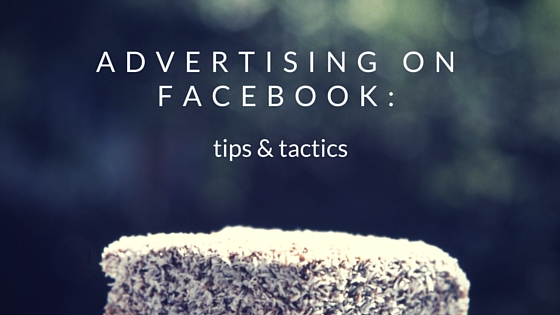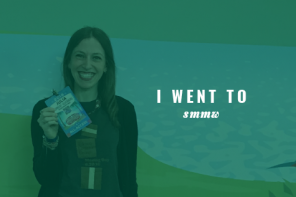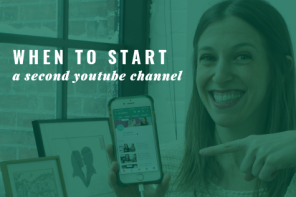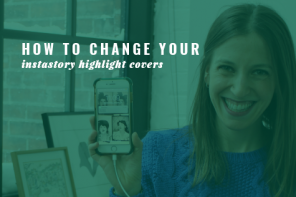Facebook ads are becoming an increasingly powerful tool for social media marketers.
From tracking pixels to lead ads, it seems like Facebook introduces a new feature or layer to their advertising platform every few weeks.
Considering that there are approximately 1.5 billion active Facebook accounts, Facebook is a platform that makes sense for marketers regardless of their industry.
Just like in 2014, there was no excuse for a business to not have a Facebook page, in 2016 there’s no excuse for a business to not be advertising on Facebook.
When it comes to social media marketing, I’m all about helping businesses save time and money.
Even if your business has a budget of $200/year, I think that Facebook is a smart place to invest your advertising dollars in.
However, I don’t want to see you waste money, so I’m sharing the best advertising practices with you today.
The power of paid ads
As a marketer, there are literally thousands of different ways to leverage the power of Facebook ads to better reach and connect with your ideal target audience.
With 15 different ad types and over 1,200 targeting options, Facebook makes it easy for marketers to create campaigns that are tailored to achieve their goals.
For instance, Facebook rolled out detailed targeting not too long ago which allows you to target multiple interest categories and/or exclude other categories.
Whether you want to grow your audience or website traffic, you can create a Facebook campaign that is tailored to convert on that specific goal.
Boosted Posts
One of the easiest ways to advertise as a business on Facebook is to boost a post.
I know a lot of small businesses doing this, and it makes me cringe because boosting a post is not a strategic way to advertise on Facebook.
Boosts are best when you’re trying to increase the reach or engagement of a specific post.
However, if you’re trying to drive traffic to your website, a boosted post is a waste of time, money and effort.
If you want to save money and advertise strategically, only do a boosted post when you want to drive more engagement; be sure to only boost the post to fans of your page as a way to keep costs down.
Custom Audiences
Facebook knows that you want to see what’s important to you; that’s why they invented an algorithm. This algorithm is super smart, and right now it’s working to optimize video content.
Facebook also knows that you don’t want to be bombarded with ads; that’s why they invented custom audiences and re-targeting.
When it comes to advertising on Facebook, it’s smarter to target warm traffic before cold traffic.
Warm traffic is a fancy way of referring to people on Facebook who “know you”; they’ve either liked your page, are on your email list or visited your website.
Custom audiences are warm traffic, and they’re accessible through the use of Facebook pixels.
You should be targeting these folks because they are more likely to convert than cold traffic; cold traffic essentially means strangers on Facebook.
Furthermore, you should be diving into Facebook pixels in order to see all of the benefits (in the form of insights,) that result from doing so.
For instance, Facebook has two different ad types for driving website traffic; one is for website clicks and the other is for website conversions.
The difference between the two? Pixels.
Pixels will track website conversions from list sign-ups to purchases.
Now that you see the power of Facebook ads, it’s important to keep in mind the best practices when starting:
- Objective: Pick the objective that aligns with your goals for the campaign. If your goal is website conversions, pick that! Don’t pick video views; picking video views will result in Facebook creating a lookalike audience for you of those who watched your video. This isn’t helpful if you’re trying to drive website sales.
- Consistency: Your ad image should match/mirror the landing page you’re sending people to when they click the ad. This will increase your relevance score, which is Facebook’s way of grading you on how relevant your ad is to the audience.
- Capture attention: Grabbing people’s attention early on is critical. Especially if you’re running a video ad, you want to get creative to find ways to get people to un-mute the sound within the first few seconds of the ad. You can do this through captions or gestures.
- Video: We know that Facebook’s algorithm is prioritizing video, so it’s worth testing out video ads to see if they result in lower costs per click (cpc) and higher click-through rates (ctr.)
- Casual converts: People are using Facebook in a casual manner; they’re interacting with friends and sharing personal events. You don’t want to show up looking super professional on a personal platform; be casual in your copy and in your approach. For example, shoot your video ad on your iPhone; it’s a great way to be immediately relatable to your audience.
- Be specific: Don’t forget to match your copy to your campaign goal; be sure that you’re telling people exactly what you want them to do as a result of seeing this ad.
- Robust reporting: There are a ton of metrics that Facebook gives you to measure the success of your campaigns. I recommend focusing on the number of clicks or impressions, as well as the cpc and ctr.
- Patience: Be patient when starting your campaign; it takes about 2 full days for your ad to hit Facebook’s algorithm. If you aren’t impressed with the statistics you’re seeing immediately, just hold tight. Wait at least 3 days before making changes to your advertisement so that you give Facebook’s algorithm time for it to work with your ad.
Regardless of your budget, target audience or industry, it’s clear that Facebook ads can be an extremely effective tool.
Keep in mind that people are using Facebook for personal reasons; if you want to stand out, you want to be generous, genuine and authentic.
What do you think? Have you had success with Facebook ads?
Share your story with me below!





